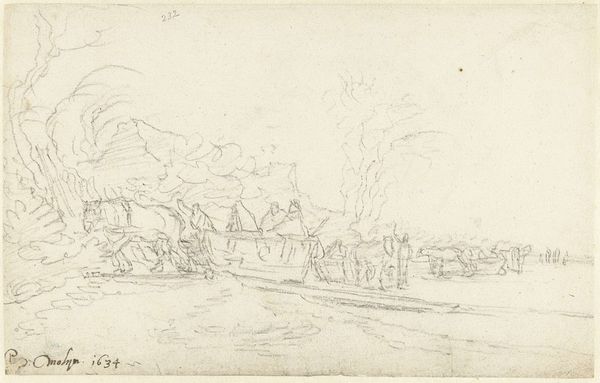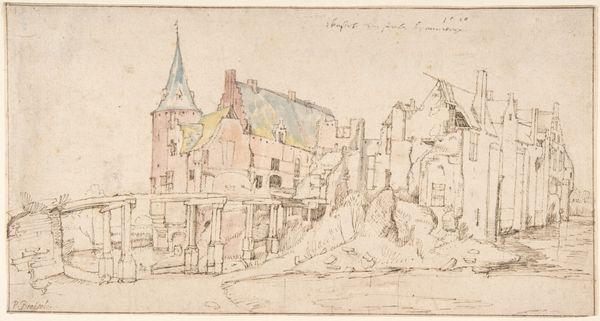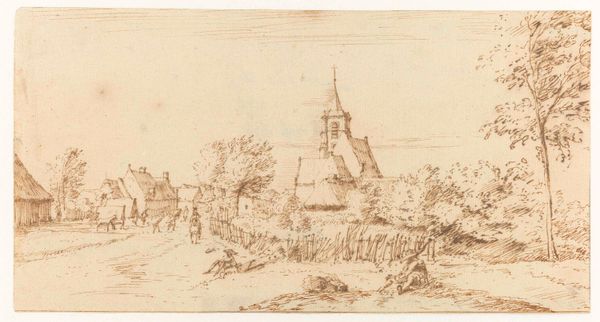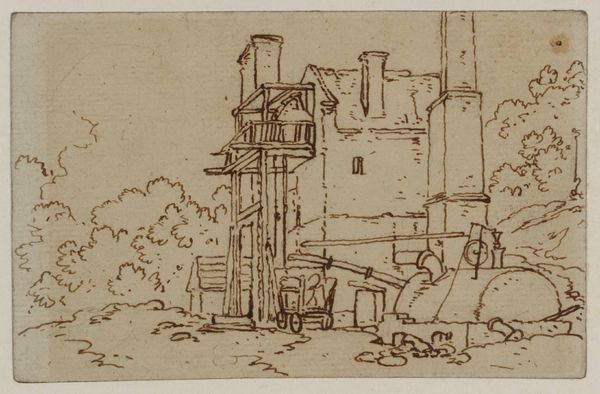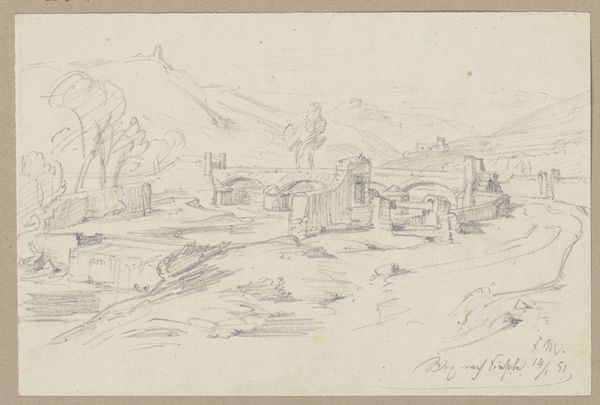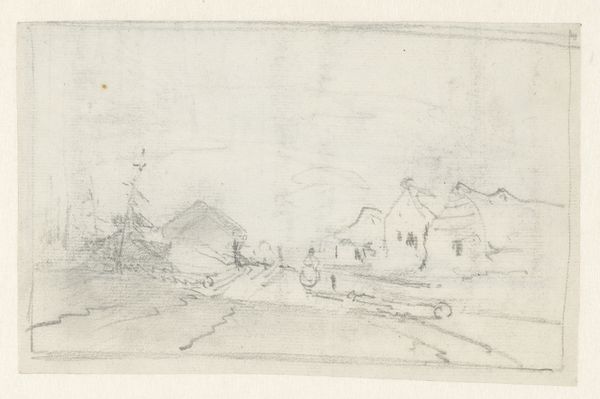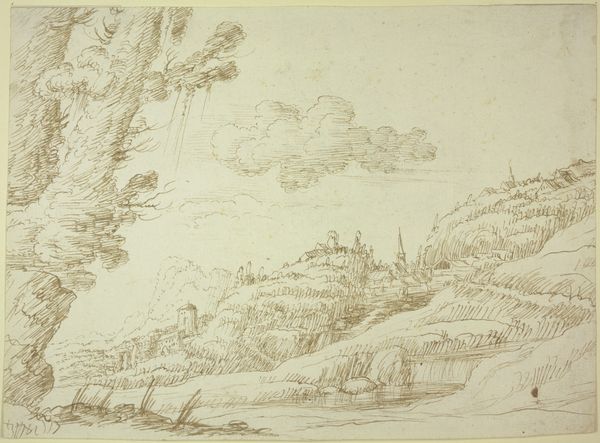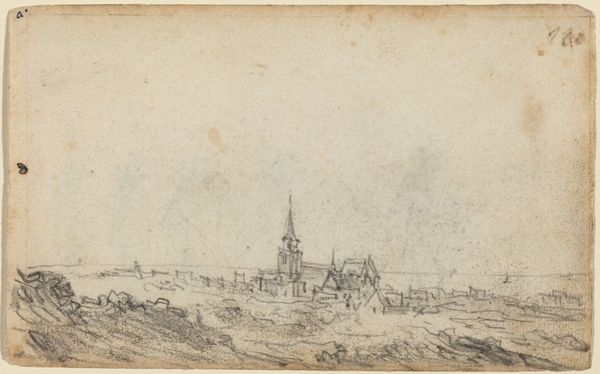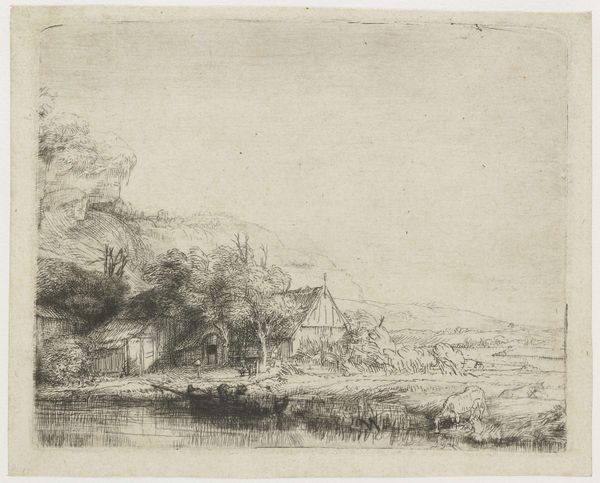
drawing, pencil
#
drawing
#
dutch-golden-age
#
landscape
#
pencil
#
cityscape
Dimensions: Overall (approximate): 11.2 x 22.3 cm (4 7/16 x 8 3/4 in.) support: 18.7 x 27.7 cm (7 3/8 x 10 7/8 in.)
Copyright: National Gallery of Art: CC0 1.0
Editor: This is "Houses by a Road," a pencil drawing by Jan van Goyen, dating from around 1627 to 1629. It's a quick sketch, almost fleeting, but I find it very charming. What stands out to you, especially within the context of its time? Curator: The charm you perceive reflects a specific societal shift. In the Dutch Golden Age, there was an emerging interest in portraying everyday life and local landscapes. Before, art was mostly for the elite, focusing on religious or mythological scenes. But van Goyen, and others like him, found value in the ordinary. How does this seemingly simple depiction, in your view, speak to a broader cultural democratization? Editor: That’s interesting! It's almost like bringing art to the people. This drawing is very accessible. Not intimidating like some grand history painting. The subject matter seems familiar, inviting. Is that something van Goyen might have been conscious of doing, shifting the art market, maybe? Curator: Absolutely. Artists like van Goyen played a role in creating a thriving art market accessible to a wider public. Think about it: small, easily transportable drawings depicting familiar scenes became desirable commodities for the burgeoning middle class. So, how does understanding this socio-economic context affect your reading of the work's “charm”? Does it take away or add to your appreciation? Editor: It definitely enriches it! Knowing that this sketch isn't just a pretty picture, but a reflection of societal changes and artistic innovation, makes it so much more engaging. It also makes you wonder who owned it, why they bought it... Curator: Exactly. The simple act of buying a piece of art was a statement. It was about shaping identity, about participating in a cultural moment. This artwork, though modest, reveals a significant power shift in 17th-century Dutch society. Editor: I’ll never look at a landscape drawing the same way again. Thanks! Curator: My pleasure. It’s important to remember that art is always embedded in its time and place, reflecting both the aesthetic tastes and socio-political forces at play.
Comments
No comments
Be the first to comment and join the conversation on the ultimate creative platform.

